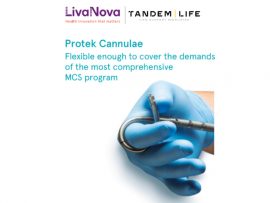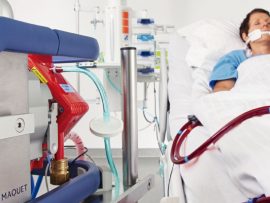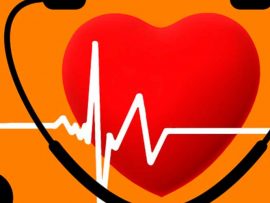Abstract Background Veno-arterial Extracorporeal Membrane Oxygenation (VA-ECMO) is a rescue treatment in refractory cardiogenic shock (CS) or refractory cardiac arrest (CA). Exposure to hyperoxemia is common during VA-ECMO, and its..
Lee masExtracorporeal membrane oxygenation in diabetic ketoacidosis-related cardiac and respiratory failure
Abstract Introduction: Diabetic ketoacidosis (DKA) is a common clinical problem. When patients develop severe shock and/or respiratory failure, extracorporeal membrane oxygenation (ECMO) may be considered. This case series describes the..
Lee masAbstract Objective Strategies for red blood cell (RBC) transfusion in patients undergoing cardiac surgery have been traditionally anchored to hemoglobin (Hb) targets. A more physiologic approach would consider markers of..
Lee masAbstract Background The Society for Cardiovascular and Interventions (SCAI) classification has been shown to provide robust mortality in a variety of cardiovascular patients. Objectives This study sought to evaluate the SCAI classification in postoperative..
Lee masAbstract Importance: Skin pigmentation influences peripheral oxygen saturation (SpO2) measured by pulse oximetry compared to the arterial saturation of oxygen (SaO2) measured via arterial blood gas analysis. However, data on..
Lee masAbstract Antegrade cardioplegia is routinely given during cardiac surgery. The delivery of antegrade cardioplegia from the cardiopulmonary bypass machine has many variables. Many perfusionists rely exclusively on cardioplegia system pressure..
Lee masAbstract Objective To evaluate and synthesise the factors determining patient safety culture in hospitals. Methods The scoping review protocol was based on the criteria of the Joanna Briggs Institute. Eligibility criteria were..
Lee masAbstract OBJECTIVES: This review aims to: 1) identify the key circuit and patient factors affecting systemic oxygenation, 2) summarize the literature reporting the association between hyperoxia and patient outcomes, and..
Lee masAbstract Objectives We aimed to evaluate thrombotic and hemorrhagic complications with heparin versus bivalirudin use in veno-venous extracorporeal membrane oxygenation (V-V ECMO). Methods We performed a retrospective cohort study of..
Lee masAbstract Background Cardiac surgery-associated acute kidney injury (CSA-AKI) is frequent. While two network meta-analyses assessed the impact of pharmacological interventions to prevent CSA-AKI, none focused on non-pharmacological interventions. We aim..
Lee masAbstract Venoarterial extracorporeal membrane oxygenation (VA-ECMO) use for circulatory support in cardiogenic shock results in increased left ventricular (LV) afterload. The use of concomitant Impella or intra-aortic balloon pump (IABP)..
Lee masAbstract Background: In congenital heart surgery, low cardiac output syndrome (LCOS) is a major cause of morbidity in the immediate post-operative period. A decrease in cardiac output leads to an increase..
Lee masAbstract The impact of blood pressure targets and surgical approach (laparoscopic or open) on continuous urinary oxygenation (PuO2), a validated surrogate of renal medullary PO2, during general surgery, is unclear...
Lee masAbstract Introduction Growing evidence supports cardiopulmonary resuscitation (ECPR) for refractory out-of-hospital cardiac arrest (OHCA) patients, especially in experienced centres. We present characteristics, , and outcomes of patients treated with ECPR in a..
Lee masAbstract Background Isolated limb perfusion (ILP) is a regional cancer treatment in which high-dose chemotherapy is administered in an isolated extremity. The main side effect is regional toxicity, which occasionally..
Lee masAbstract Background Hypersensitivity reactions to heparin are uncommon conditions but pose a serious clinical problem for patients requiring cardiopulmonary bypass. Bivalirudin is a reversible direct thrombin inhibitor that can be..
Lee masAbstract We present historical accounts of congenital heart surgery since the early 1900s, as our specialty evolved from individual heroic efforts into an established and sophisticated surgical specialty with consistent..
Lee masAbstract Diseases affecting the aortic arch often require surgical intervention. Hypothermic circulatory arrest (HCA) enables a safe approach during open aortic arch surgeries. Additionally, HCA provides neuroprotection by reducing cerebral..
Lee masAbstract A dysregulated host response is a common feature in critically ill patients due to both infectious and non-infectious origins that can lead to life-threatening organ dysfunction, which is still..
Lee masAbstract Introduction Survival from refractory out of hospital cardiac arrest (OHCA) without timely return of spontaneous circulation (ROSC) utilising conventional advanced cardiac life support (ACLS) therapies is dismal. CHEER3 was..
Lee masAbstract Venovenous extracorporeal membrane oxygenation (VV-ECMO) is a life-saving therapy for critically ill patients, but it carries an increased risk of thrombosis due to blood interacting with non-physiological surfaces. While..
Lee masAbstract Objectives Patients undergoing cardiac surgery often require , which are associated with increased morbidity and mortality. Patient blood management (PBM) strategies, including acute normovolemic (ANH), have been implemented to minimize allogeneic..
Lee masAbstract Unfractionated heparin (UFH) is the most used anticoagulant in patients receiving veno-venous extracorporeal membrane oxygenation (VV-ECMO). Its therapeutic levels are monitored using activated partial thromboplastin time ratio (aPTTr) or..
Lee masAbstract Background Burnout has gained increasing attention worldwide as a phenomenon that affects health care professionals. However, there is a lack of relevant research about its impact on practitioners in..
Lee masAbstract Background: Veno-arterial extracorporeal membrane oxygenation (VA-ECMO) is an effective mechanical circulatory support for cardiac insufficiency following cardiac surgery especially cardiac surgery with extracorporeal circulation, which can quickly restore the perfusion..
Lee masAbstract The pathophysiology of post-cardiac arrest syndrome features ischaemic/reperfusion injury and the release of high levels of inflammatory cytokines [1]. These inflammatory markers include interleukin-6 (IL-6), C-reactive protein (CRP), tumour..
Lee masAbstract Despite extracorporeal membrane oxygenation (ECMO) utilization in nearly 20% of cases, there are limited data in children with acute fulminant myocarditis (AFM) requiring ECMO. Herein we identify risk factors..
Lee masAbstract A dysregulated host response is a common feature in critically ill patients due to both infectious and non-infectious origins that can lead to life-threatening organ dysfunction, which is still..
Lee masThis case reports on an 53-year-old female patient who was admitted to the hospital with an 8 day history of fever and chills, loose stools, vomiting, severe weakness, and reduced..
Lee masAbstract Venoarterial extracorporeal membrane oxygenation (VA-ECMO) initiation for patients with cardiogenic shock or cardiac arrest is an attractive strategy since it provides a quick restoration of organ perfusion. One major..
Lee mas















